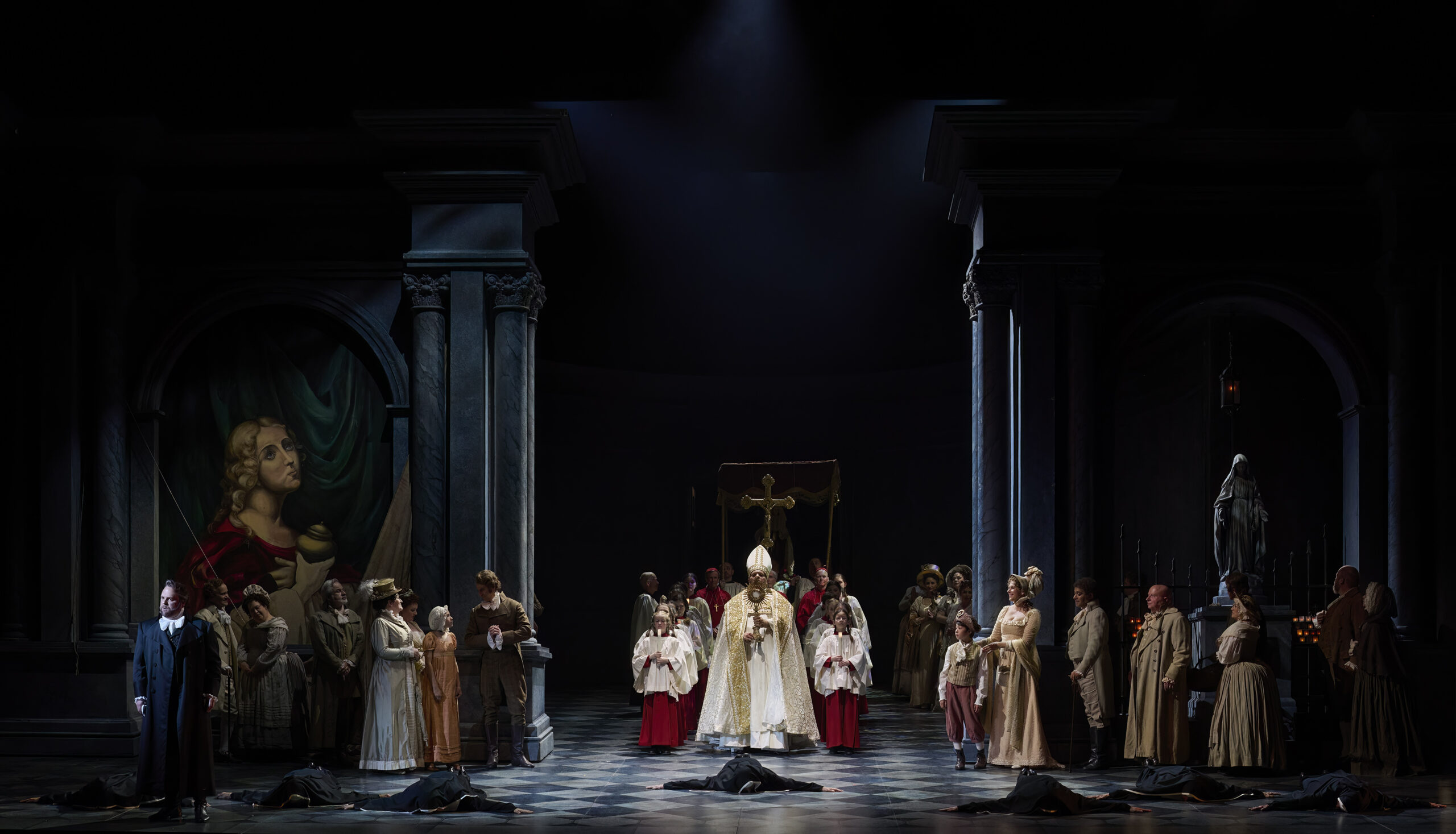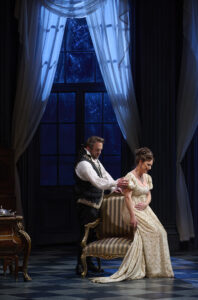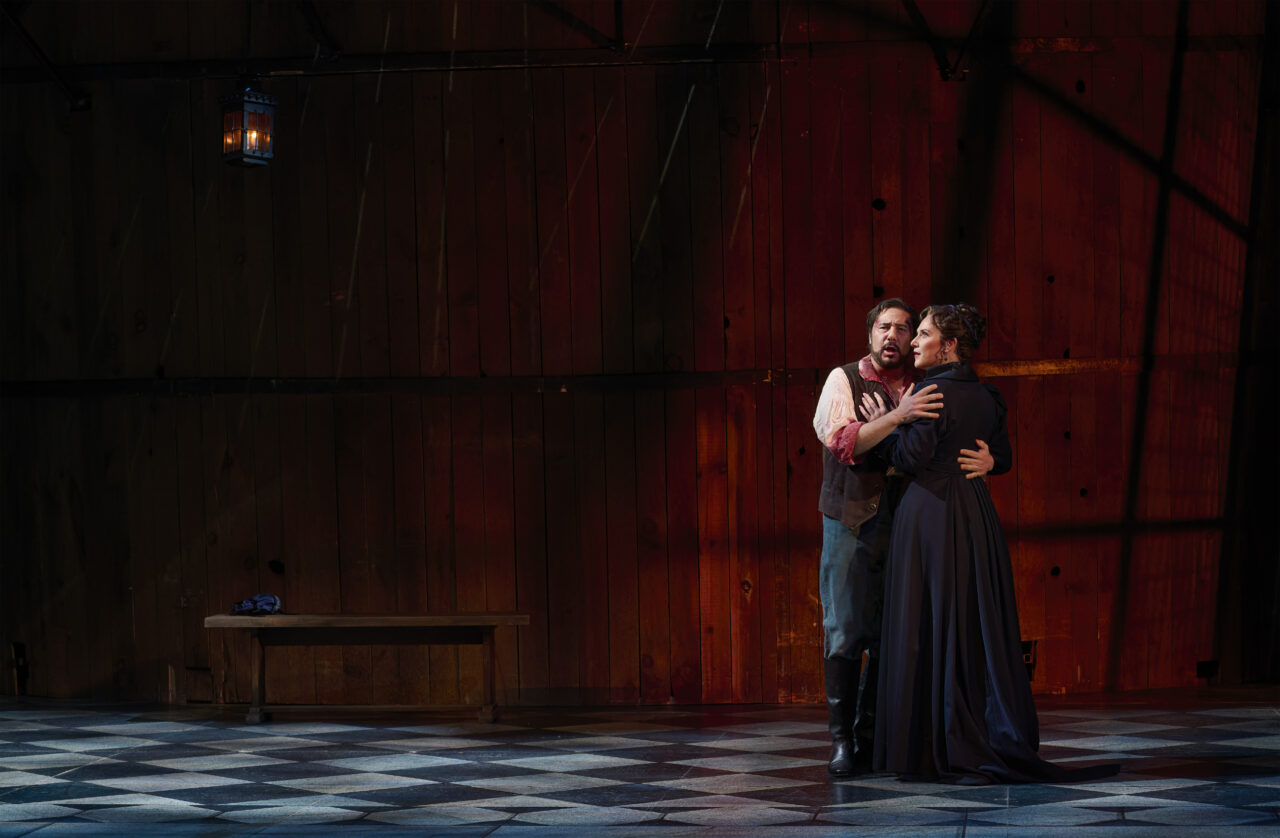One of my strongest childhood summer memories involves the great indoors. The intense humidity and rain of one Southern Ontario July forced in-house activities, so my mother decided to enjoy the fruits of still-new VCR technology and watch some of the items within an immensely arts-leaning library. It used to be such an occasion to pop a tape in and watch something one had recorded weeks or even months before; the act of rewatching a program, of having easy access to that piece of news or entertainment, of being able to fast-forward through commercials, or rewind and re-view something, or pause on a favorite spot – it was all a big deal, and a unique form of techno-social adhesion.
Many of the tapes in my mother’s growing collection were recordings of Metropolitan Opera productions, broadcast regularly on PBS. I imagine this is how more than a few people (kids included) came to opera, through such broadcasts and through the use of VCRs. The rainy summers became more bearable, and introduced a host of young friends to what, for me, was just a normal part of everyday life. Puccini’s 1900 opera Tosca was a favorite; the characters, the setting, the music – it was all very intriguing to a young mind. I wore out the videotape of the celebrated 1985 Franco Zeffirelli production with Hildegard Behrens in the lead, Placido Domingo as her devoted lover Cavaradossi, and Cornell MacNeil as a very scary Scarpia. One rainy afternoon the mother of one of my friends who had been visiting came by to collect her child, and then stood, open-mouthed, in our doorway. I had turned around, between bites of an ice cream float, and looked at Mrs. So-and-so. How was this so weird? What was she stunned over? My friend was as taken as I was over this intense, passionate, violent, crazy work with amazing music; why the surprise? My mother offered her most elegant smile.
“It’s almost over; can you wait a few minutes?”
“Sure,” said shocked mum. “I just never expected my daughter to be so interested in… opera!”
My mother laughed over dinner later in our tiny, dimly-lit kitchen.
“She just couldn’t believe her eyes…”
I made a face.
“Not everyone likes classical music, you know. Especially opera.”
Well they should, I said, leaning over and scooping up the cat, humming the Dah-DAH! notes of Scarpia’s scary musical motif.
“Put the cat down when you’re at the table.”
DahDAAAHHHH!
My mother rolled her eyes.
“Let’s watch something else tonight, okay?”
It’s easy (and certainly fashionable) to make faces and roll eyes and pronounce Puccini’s work too vulgar, too loud, too big, too (heaven forbid) emotional; to write off Tosca as a “shabby little shocker” (musicologist Joseph Kerman’s infamous 1952 pronouncement) and to wave it off as not-serious art and not-real opera. I’m not sure how to feel about this line of thinking; indeed, it isn’t The Ring, but so what? Should all opera be precisely the same? What’s so wrong with emotion? Intelligence is elevated but empathy is far more rare, and Tosca reminds me of its importance, in art and in life. Yes, the opera is clearly a part of my childhood nostalgia, but I hear bits of the score and still get chills at how evocative it is, in terms of conveying both outer and inner realities, and the ways it deftly combines art, sex, religion, and politics. Scarpia’s attempted rape of the title character in the Second Act lands very differently as an adult; there is a stomach-churning familiarity. It is uncomfortable but the scene renders his murder by the would-be victim that much more powerful, and his ultimate revenge on her that much more horrific. Such immediacy matters in art and gains more meaning as the years go by.
This close-to-the-bone quality is one writer Tori Wanzama picks up on beautifully in her essay below. The Communications student, who previously contributed to this website with an excellent essay on her first opera experience at Carmen this past autumn, recently attended the current Canadian Opera Company staging (a remount of its 2008 production) and offers some wonderfully singular insights involving theatre, drama, and… heavy metal? Read on.

Roland Wood as Scarpia (downstage left) in the Canadian Opera Company’s production of Tosca, 2023.
Tosca: Love, Hate, And A Twisted Triangle
Last October I had the privilege of attending the Canadian Opera Company’s presentation of Carmen at the Four Seasons Centre in Toronto, and to detail the excitement of my first opera experience. I enjoyed the show thoroughly, though it didn’t spark the classical-leaning revolution in my musical taste the way I had anticipated.
Admittedly I do return to the famous “Habanera” from time to time, and it, like Bizet’s opera, remains just as hypnotic as the first time I heard it. But metal has dominated my listening habits lately, making screaming and “shredding” the standard for me. While I consider my music taste eclectic and all-encompassing, my affinity for metal has given me a critical ear toward other genres. I enjoy them all, but still feel most lack a vital ingredient: drama. I find myself longing for the ferocity of intense instrumentals and booming vocals that demand virtuosity from artists. It is the same quality which is alive and nurtured at the opera, and that I found especially present in Giacomo Puccini’s Tosca, which I was fortunate enough to attend in Toronto last week.
In Rome, 1800, a twisted love triangle begins amidst the French Revolutionary Wars. The union of opera singer Tosca (Sinéad Campbell-Wallace) and painter Cavaradossi (Stefano La Colla) is challenged when the latter hides escaped political prisoner Angelotti (Christian Pursell). The painter’s crime is discovered by the cruel chief of police Scarpia (Roland Wood) who plans to execute both men; the chief’s enthusiasm for execution is matched only by his lust for Tosca whom he propositions, offering her lover’s freedom in exchange for her submission to him. Tosca seemingly concedes, but once Scarpia signs a letter of safe conduct she is quick to kill him. Victoriously, Tosca reunites with Cavaradossi to deliver her good news, but the couple’s happiness is short-lived when Cavaradossi’s execution is still carried out; in despair Tosca ends her life. This third act betrayal is played as a shock but the tragic end reveals itself far earlier, in Act 1, when the three leads reveal their true natures; with every passing aria their terrible trajectory becomes plain to see.
In the Toronto presentation (running to May 27th), La Colla’s Cavaradossi is sung with pure conviction. When he sings of his love for Tosca in “Dammi i colori” his passion for her is tangible, with a vocal tenderness difficult to describe. I can only stress to see it live it if you can; I quite literally swooned in my seat as he sang his admiration of Tosca’s brown eyes, and I find I am yet haunted by his delivery, even several days after experiencing it; his commitment is clear, as is his loyalty to Angelotti, the friend he helps to hide. “E’buona la mia” is delivered with genuine urgency as he promises his help, and curses Scarpia with a hypnotic cadence that is reminiscent of a priest delivering blessings to ward off evil. Cavaradossi is dedicated to those whom he cares for, but it is this devotion that is his demise when faced with cruel competition.
The same can be said of Tosca, whose love for Cavaradossi is demonstrated in her possessiveness. Despite her jealous ways, it is clear why the role is so famous as Campbell-Wallace takes the stage to offer a Tosca who is both cunning and cute. Campbell-Wallace brings such charisma to the character that even Tosca’s jealousy is endearing, especially in the scenes with her bickering back and forth with Cavaradossi in their love duet. Campbell-Wallace and La Colla’s vocals are heavenly in harmony, and there is a seamless chemistry between the performers that makes the exchange especially charming; I could see the years behind this couple, just as clearly as I could see the end of their days. Their devastating love for one another creates a malaise that lingers and peaks in act two with “Vissi d’arte”. Your heart breaks as Tosca mourns her tragic circumstance and sings with beautiful horror at Scarpia’s advances. Her audible desperation underscores her determination to protect Cavaradossi no matter the cost.

Roland Wood as Scarpia and Sinéad Campbell-Wallace as Tosca in the Canadian Opera Company’s production of Tosca, 2023. Photo: Michael Cooper
This ruthless resolve is matched by Cavaradossi’s competition, Scarpia, who is driven by lust rather than love. Roland Wood embodies Scarpia perfectly, with a booming baritone befitting of such a cruel character. The “Te Deum” is an absolutely chilling number conveying the chief of police’s corruption to superb effect. Scarpia is explicit about his evil intentions as he revels in his manipulation of Tosca with the Cardinal’s procession as his chorus. The chief explains the pleasures of romantic conquest with such perverted pride that makes his performance both uncomfortable and enticing to watch.
The First Act sets a foreboding tone with each performer conveying emotions which make individual motivations clear, and with such conviction coming from each character that there is no other end but disaster. We can only await the sequential calamity as the loyalty of the lovers is tested against Scarpia’s ruthlessness. The small cast creates a palpable intimacy, bringing the audience closer to each character, surely an aim of the verismo tradition; the operatic genre contrasts contained, realistic story writing with a florid and declamatory vocal style that emphasizes emotion. This cast delivers with awe-inspiring vocals that soar above even the bombastic orchestra led by conductor Giuliano Carella.
I left Tosca both impressed and unsettled; the show is unmistakably “metal” in its presentation of beautiful brutality. In his director’s note, Paul Curran noted that “opera is about sex, religion, and politics” and immediately I thought metal is much the same. The two genres also share an unflinching gaze, not only at death, but at human anguish. Researching this shared affinity for agony led me to Aristotle’s concept of catharsis in which the ancient philosopher states in observing tragedy that evokes fear and pity, “the human soul…is purged of its excessive passions”. Across both genres, artists explore the aforementioned ideas to their extremes, creating a unique release for respective audiences; despair becomes delight amidst the throes of musical virtuosos, and metal and opera alike offer an essence that cannot be found anywhere else.

Leave a Reply